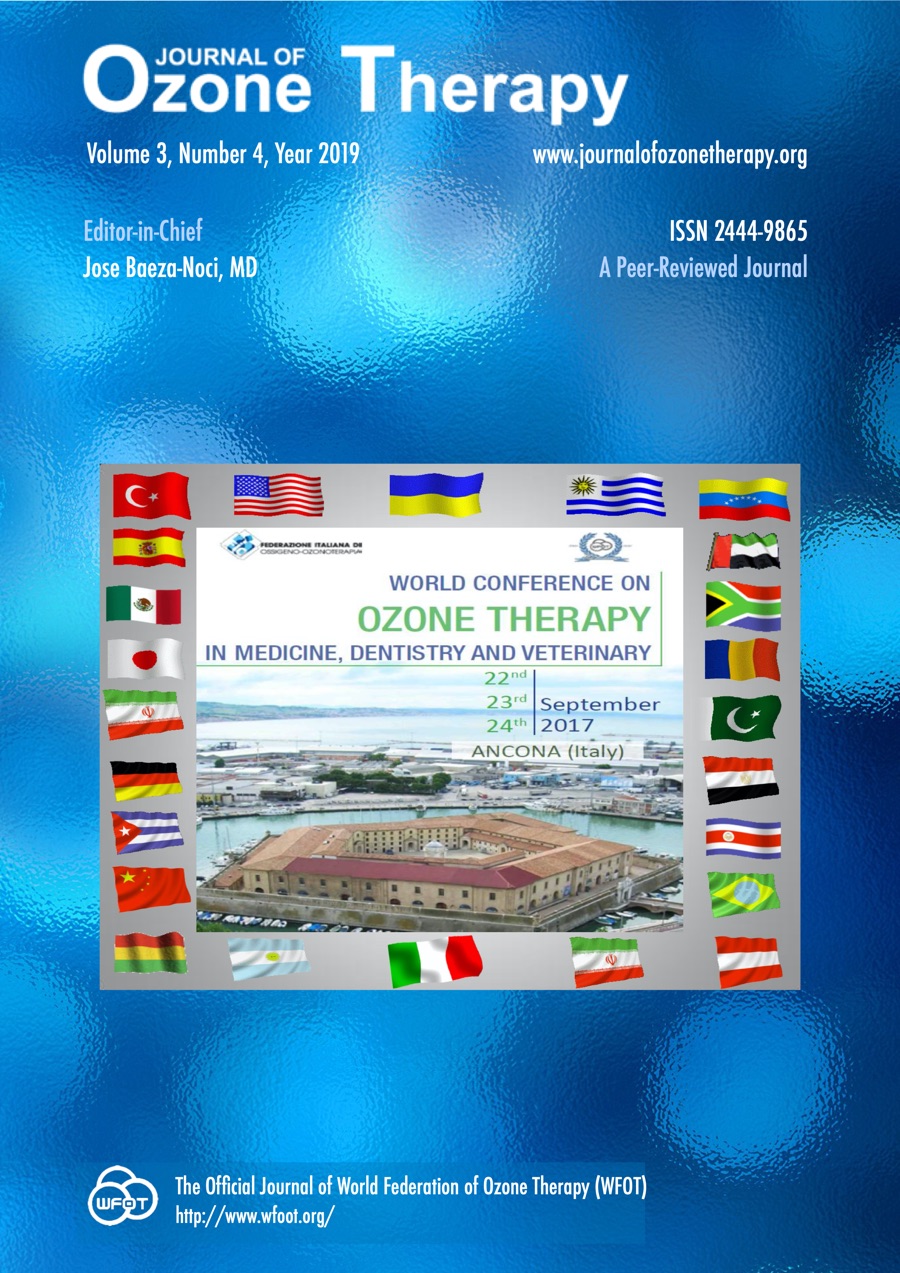Ozone therapy in ethidium bromide-induced demyelination in rats: possible protective effect [abstract]
DOI:
https://doi.org/10.7203/jo3t.3.4.2019.15518Paraules clau:
multiple sclerosis, ozone therapy Resum
Resum
BACKGROUND: Multiple sclerosis is an autoimmune inflammatory disease of the central nervous system and it is characterized by excessive demyelination
PURPOSE: The study aim to investigate the possible protective effect of ozone (O3) in ethidium bromide (EB) induced demyelination in rats either alone or in combination with corticosteroid in order to decreases the dose of steroid therapy.
MATERIAL and METHODS:
Rats were divided into 7 groups
Group (1) normal control rats received saline.
Group (2) sham-operated rats received saline.
Group (3) sham operated rats received oxygen.
Group (4) EB-treated rats received EB.
Group (5) EB treated rats received oxygen.
Group (6) EB treated rats received methyl prednisolone (MP)
Group (7) EB treated rats received half the dose of MP concomitant with ozone.
RESULTS: Significant improvement in the brain serotonin, dopamine, noradrenalin. A reduction of MDA,TNF-COX2 immune-reactivity was noticed in MP and oxygen groups .
Furthermore, best amelioration was achieved by combining half the dose of methyl-prednisolone with ozone.
CONCLUSION: We concluded that ozone has a protective effect on demyelination and can be used due to its protective effect in demyelinating diseases such as multiple sclerosis.
 Descàrregues
Descàrregues
Descàrregues
Publicades
Com citar
-
Resum393
-
PDF 224
Número
Secció
Llicència
Journal of Ozone Therapy applies the Creative Commons Attribution-NonCommercial 4.0 International License (CC BY NC 4.0) license to works we publish.
Under this license, authors retain ownership of the copyright for their content, but allow anyone to download, reuse, reprint, modify, distribute and/or copy the content as long as the original authors and source are cited. No permission is required from the authors or the publishers.
You may not use the material for commercial purposes.
Appropriate attribution can be provided by simply citing the original article, provide a link to the license, and indicate if changes were made.
You may do so in any reasonable manner, but not in any way that suggests the licensor endorses you or your use.




